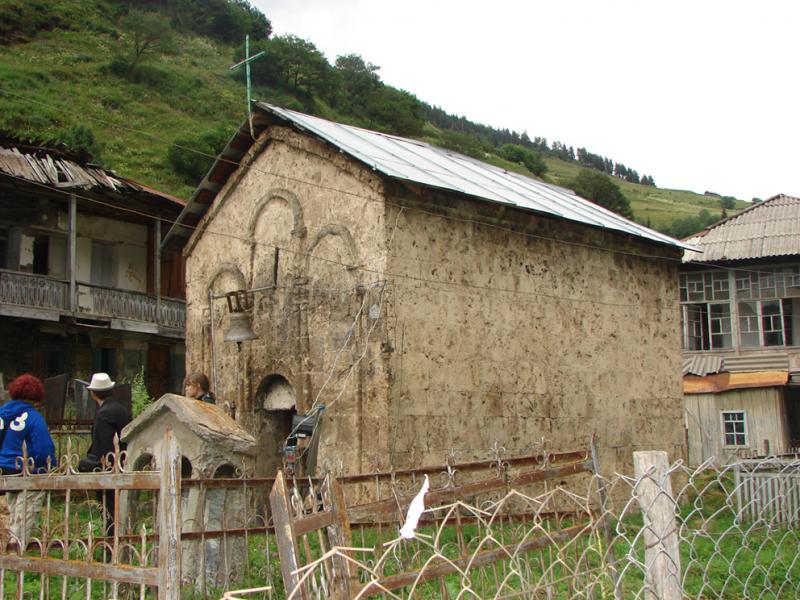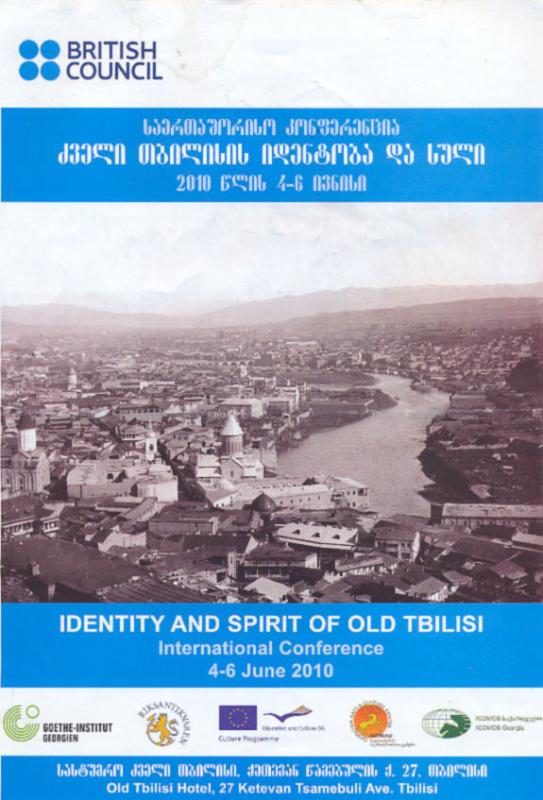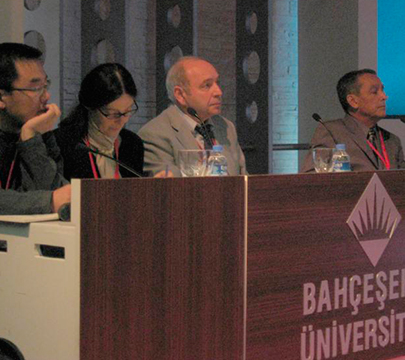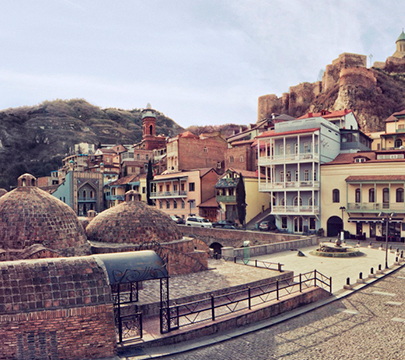Mzia Chikhradze, the Senior Research Fellow of Modern and Contemporary Art department of Giorgi Chubinashvili National Center for Georgian Art History and Monument Preservation Studies, participated in Fulbright program as an art historian from October 25, 2009 to June 24, 2010. During that period she worked on a scientific research project “Modernism and Georgian Avant-garde Films” as a visiting scholar at the Harriman Institute of Columbia University of New York.
In Columbia University Mzia Chikhradze arranged a scientific conference on the topic “Modernism in Georgia: Redrawing the Boundaries” (see the web site http://www.harrimaninstitute.org/events/conferences.html). In the atrium of The Harriman Institute at Columbia University she arranged the exhibition of Georgian Modernist art, where were exhibited colored photo copies of the paintings, theatre designs, futurist books, avant-garde films created in 1910-1930s in Tbilisi (Georgia), which was the cultural center of Russia and Caucasus of that period (see web site http://www.harrimaninstitute.org/events/exhibits.html).
In above mentioned conference “Modernism in Georgia: Redrawing the Boundaries” participated both Georgian and foreign specialists. The conference was interesting from the point of view of sharing the knowledge on Georgian modernist art and establishing the contacts with the specialists working in the sphere of modernist art and literature. The conference gave to Georgian art historians the opportunity to introduce the essential events and spheres of Georgian modernist art to the broader audience.
The conference Modernism in Georgia: Redrawing the Boundaries was held on 10th of April 2010. The conference aimed to cover multiple aspects of Georgian Modernism, including the birth of Modernist and avant-garde art in Georgia; the relationship between politics, art, architecture and culture in the beginning of the 20th century; Georgian Modernism and the avant-garde in relation to European discourse; Modernist artists and avant-garde groups in Tbilisi; the introduction of a new artistic language in all spheres of culture – art, theatre, cinema, and poetry among them; and the relationship of Soviet ideology to art and cultural practice. All presentations were unified thematically and contextually under the theme: Georgian Modernism, the Avant-garde and Modernity.
The presenters on the conference were: Catharine Nepomnyashchy (Ann Whitney Olin Professor of Russian literature and Department Chair, Barnard College, Columbia University), Lauren Ninoshvili (PhD student, Graduate School of Arts and Sciences, Columbia University; Georgian Studies Coordinator, Harriman Institute, Columbia University), Harsha Ram (Associate Professor of Slavic Languages and Comparative Literature, UC Berkeley), Francoise Le-Gris (Associate Professor of Art History, University of Quebec, Montreal), Pamela Renner (Arts Journalist; Adjunct Instructor in English, Empire State College, Harry Van Arsdale Center for Labor Studies), Ketevan Shavgulidze (Associate Professor, Grigol Robakidze Art University; Professor, Tbilisi State Academy of Fine Arts; Ivane Javakhishvili Tbilisi State University), Tea Tabatadze (Research Fellow, Chubinashvili National Research Center for Georgian Art History and Heritage Preservation; Professor, Tbilisi State Academy of Fine Arts), Nestan Tatarashvili (Architect; Head of the Art Nouveau Preservation Group in Georgia; Architect at the Society with Limited Responsibility GROSSO), Mzia Chikhradze (Senior Research Fellow, Chubinashvili National Research Center for Georgian Art History and Heritage Preservation; Fulbright Visiting Scholar at the Harriman Institute of Columbia University); and Olga Zhgenti (Scientific Researcher, Scientific Research Center of the Cinema at Rustaveli State University of Theater and Cinema of Georgia; Invited Professor, Rustaveli State University of Batumi, Department of Art).
The conference was accompanied by an exhibition of Georgian Modernist and avant-garde art at the Harriman Institute of Columbia University. Mzia Chikhradze was an organizer and coordinator of the exhibition (in association with Arts Interdisciplinary Research laboratory, Georgia and Daniel Baumann, freelance curator and art historian, Switzerland). The exhibition Georgian Modernism/Tbilisi Avant-garde Art was held in April 01, 2010 – May 10, 2010 at The Harriman Institute Atrium, Columbia University.
The exhibition endeavored to show the place and role of Georgian Modernist art and culture in the development of modern western art history (in July 2009 the material of the exhibition was presented in the show “The Fantastic Tavern. The Tbilisi Avant-garde” at Casey Kaplan Gallery in NY; the exhibition was curated by Daniel Baumann the freelance curator, Switzerland and AIRL – Arts Interdisciplinary Research Laboratory, Georgia). The exhibition Georgian Modernism/Tbilisi Avant-garde Art was about a highly significant period in Georgian art history. During Georgia’s short independence as the Democratic Republic of Georgia 1918-1921, Tbilisi became the “Paris of the East”, where an inspired community of artists not only developed unprecedented creative practices but also collaborated to produce astonishing works of art. The avant-garde of Tiflis (Tbilisi) is a short but crucial period in Georgia’s rich history that eventually led to the development of films, stage design, theatrical performances, musical compositions, literature, sound poetry, magazines, books, paintings and sculptures, all of which comprise what is referred to today as “Georgian Modernism.” The color reproductions exhibited in the show illustrate Tbilisi avant-garde publications: magazines, manifestoes and poetry collections, the works of Futurists, Dadaists and other avant-garde artists, including Georgian Dada manifestos, documents on stage design, sound poetry… all of which served to provide a glimpse into the cultural events that took place in Tbilisi in the 1910-1920’s.
On 17th of April of 2010 Mzia Chikhradze participated in yearly symposium of Columbia University, it was The 15th Annual World Convention of the Association for the Study of Nationalities (ASN). The topic of the panel was “Hidden Georgian Histories in Russian Culture and Thought” and my presentation was about “The Outcomes of Georgian-Russian Cultural Relations in the Beginning of the XX Century; Two Main Aspects of Georgian Influences on Russian Art”.




